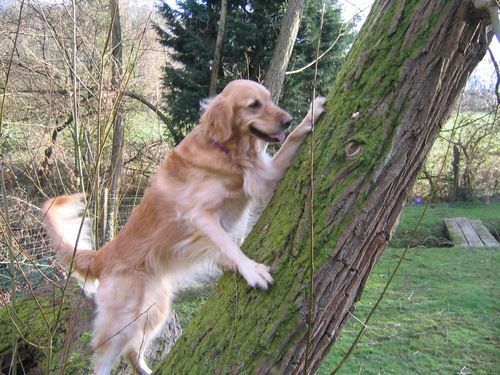A few days ago, before picking up a couple dogs for our walk, I encountered a woman whose small dog had just escaped her house through an open window. Throughout my walk myself (and my two pooch "partners" Darwin and Leo) searched for the dog and I would have spent the rest of the day looking if I didn't have other waggers to walk. We both hoped that someone had picked her up for safe keeping and would put posters out soon. The lady was just on her way to create "lost dog" signs. Unfortunately the dog just had a bath and didn't have her collar and tags on (which the woman had in her hand).
My biggest fear is losing a dog/cat. This has never happened to me and I do everything possible to prevent this. A few of my tips (which I've learned myself and taken from others) are below:
1. ALWAYS walk with a collar and tags (even when at home or in the yard). A dog walker should always require that your dog have its tags. I found a lost dog (an adorable King Charles Cavalier Spaniel) wandering near my parent's house in the suburbs. She was incredibly friendly but a little anxious and had no collar or tags. Luckily we scooped her up right away and brought her to our backyard and made posters. The owner called us frantically a few hours later as the dog had escaped from the backyard and they were reunited. We had her identify the dog based on markings. We could have returned her hours earlier if the dog had any identification, even a rabies tag which many times list the name of the vet.
2. MICROCHIP! At Toronto Humane Society (where I volunteer at the front desk and as a dog walker) we are always receiving found dogs. We have a scanner at the front desk, and the first thing we do is scan the dog for its information. If a dog doesn't have its collar and tags (or a thief has taken them off) the microchip is the best way of identifying your pet. It's also cheap (it cost around $20 to microchip Rory when she was spayed).
3. Collars and harnesses. While many harnesses for small dogs attach at the back, there are ones that attach at the front. If there is enough slack (or if you have a martingale collar), you can attach the leash to the harness and collar to ensure that if the dog slips out of the harness it can't go free. It's not 100% effective but something I do with all my front clasp harness pooches. If a dog has a harness that attaches at the back, I am extra cautious when he rolls around or runs, and am constantly checking to ensure a leg hasn't escaped so he can't "walk out" of it. Also ensure that collars fit properly as they tend to get quite loose over time, especially leather ones.
What to do if you found a dog?
1. Don't chase him! While some dogs may immediately come over, wagging their tail (like the friendly Cav I found), many are in fight or flight mode and will run from you if called or followed. A great suggestion from MissingPetPartnership.org is to sneeze to get the dog's attention then look away (a submissive gesture) and then pretend like you're eating, lay on your back and pat your chest. Basically avoid following the dog and staring right at him, especially if he already seems nervous.
2. Basics. Check ID. Get the pet scanned at a vet, Toronto Animal Services, or Toronto Humane Society. Put up posters. When making posters for a dog without tags or a microchip, don't include a photo of it as this could lead to a person making a false claim. Have the owner identify the pet by their markings or other distinguishing features/behaviours.
3. Post on Facebook. There are a couple of great Facebook groups ("Lost and Found Pets Toronto", "Lost and Found Pets Ontario", "Lost Dogs Toronto") that allow people to post about lost and found pets.








